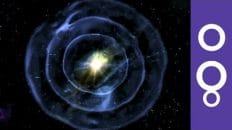In May this year, a serious leak of ammonium coolant caused an emergency on the International Space Station. There was only one way to fix the problem: to go out into the vacuum on a spacewalk.
In July, ESA astronaut Luca Parmitano had to cancel a scheduled sortie into space after just an hour and a half of work after water leaked into his helmet.
In both cases the astronauts and ground control dealt with the situation with astonishing cool considering the high stakes environment they were working in.
The history of the spacewalk is almost as old as the space race itself. In 1965, Soviet cosmonaut Alexey Leonov became the first human to walk in open space. Many since have followed in his footsteps.
For Leonov, learning to spacewalk is essential for any space faring nation.
“If you direct your ship into the open sea, you better be able to swim. Now if your ship goes into space, if you’re building space stations – and we were planning to do just that – then you must be able to swim in the open space, and not only to swim, but to do assembly and disassembly work there,”
– Leonov told euronews.
Nowadays, so-called “extra-vehicular activity”, or EVA for short, is an ordinary part of life and work for astronauts. Most ISS expeditions include spacewalks, typically lasting five to six hours.
ESA astronaut Christer Fuglesang has performed five spacewalks, spending a total of 32 hours in open space.
“There are several reasons why we need EVA, most obviously if something breaks on the outside – you have to go outside and fix it, that’s when you may have to do some urgent, unscheduled EVAs. But when we were building a space station, we needed a lot – hundreds of hours of EVA,”
– said Fuglesang.
Every spacewalk starts on Earth at the Neutral Buoyancy Laboratory in Russia’s Star City. We joined ESA astronauts Samantha Cristoforetti and Alexander Gerst as they prepared for a dive.
After a short briefing and medical check-up, the pair quickly examine their space suits.
“We’ll practice opening the hatch, getting out of the airlock, transporting a big payload. We’ll work with electrical connections and practice rescuing an incapacitated crew member,”
– said Cristoforetti.
The underwater suits, almost identical to those used for EVAs, enable their users to breathe, move and maintain a normal body temperature in the extreme conditions of space. It is the combination of 50 years of technological improvement. The first lessons were learned from Alexey Leonov’s pioneering spacewalk, a mission that almost ended in tragedy.
The airlock on Leonov’s ship, Voskhod 2, was a cloth tube, barely wide enough to crawl through. It had to be compact to be compatible with the existing rocket.
“As I stepped on the edge of the airlock, for a couple of seconds, I looked around to see what I could see. And, spontaneously, a phrase came out: ‘The Earth IS round’. I uttered that without even noticing, it just came out,”
– said Leonov.
After a few minutes in open space, Leonov found that his spacesuit had ballooned from its internal pressure, stiffening to the point where the cosmonaut could not bend his joints.
Unable to re-enter the airlock, he made a risky decision to open a valve in his suit and bleed some pressure off.
“I had no right to do that. I had to report to the ground, but I realised it would cause such a panic! I felt prepared to make the decision myself. And I released the pressure,”
– Leonov added.
All Russian spacesuits, including Leonov’s, were and are designed and made at a company called Zvezda.
Its chief designer is Sergei Pozdnyakov:
“The fundamental difference from our modern suits is that Leonov’s suit was all soft. It was all made as a soft sealed shell, and the entire life-support system was carried in a separate small backpack, which Leonov had to put on and connect with tubes.”
A modern Orlan spacesuit has a solid metallic torso. Its newest model, the Orlan-MKS, can automatically regulate the temperature inside. Euronews was granted exclusive access to the Zvezda labs where the new prototype is being tested.
“A spacesuit is a shell enveloping a person, providing life support. It’s a sealed powered shell that enables the person to move in space. Any activity generates energy – heat – that should somehow be removed, so there is a special temperature control system in the suit. The carbon dioxide exhaled by the astronaut should be absorbed. In short, a spacesuit is a miniature spaceship that has arms and legs that you can move,”
– said Pozdnyakov.
Engineers simulate the open space environment inside a large thermo-vacuum chamber, so that astronauts can get used to pressure differences.
Feeling confident is crucial on spacewalks, where things do not always go as planned.
“Quite often, things get lost,” explained Fuglesang. “If things start to float away, doesn’t matter how slowly, if it’s out of reach when you see it, it’s too late.”
Whether their upcoming flights will include any planned spacewalks or not, all astronauts should be able to leave the station and perform maintenance operations wearing a spacesuit.
In training, like in a real spacewalk, astronauts have to always keep an eye on their own and their crew mate’s safety. It’s tough. Learning to work in the void can be exhausting. But the training brings the astronauts closer to that most extraordinary dream: the chance to truly walk in space.






[…] « Previous | Next » English Directed and written by Denis Loctier © Euronews 19 July 2013 Feature: Space Tweet (function() { var po = document.createElement('script'); po.type = 'text/javascript'; po.async = true; po.src = 'https://apis.google.com/js/plusone.js'; var s = document.getElementsByTagName('script')[0]; s.parentNode.insertBefore(po, s); })(); […]